Circuit-based intervention corrects excessive dentate gyrus output in the fragile X mouse model
- PMID: 38345852
- PMCID: PMC10942577
- DOI: 10.7554/eLife.92563
Circuit-based intervention corrects excessive dentate gyrus output in the fragile X mouse model
Abstract
Abnormal cellular and circuit excitability is believed to drive many core phenotypes in fragile X syndrome (FXS). The dentate gyrus is a brain area performing critical computations essential for learning and memory. However, little is known about dentate circuit defects and their mechanisms in FXS. Understanding dentate circuit dysfunction in FXS has been complicated by the presence of two types of excitatory neurons, the granule cells and mossy cells. Here we report that loss of FMRP markedly decreased excitability of dentate mossy cells, a change opposite to all other known excitability defects in excitatory neurons in FXS. This mossy cell hypo-excitability is caused by increased Kv7 function in Fmr1 knockout (KO) mice. By reducing the excitatory drive onto local hilar interneurons, hypo-excitability of mossy cells results in increased excitation/inhibition ratio in granule cells and thus paradoxically leads to excessive dentate output. Circuit-wide inhibition of Kv7 channels in Fmr1 KO mice increases inhibitory drive onto granule cells and normalizes the dentate output in response to physiologically relevant theta-gamma coupling stimulation. Our study suggests that circuit-based interventions may provide a promising strategy in this disorder to bypass irreconcilable excitability defects in different cell types and restore their pathophysiological consequences at the circuit level.
Keywords: Kv7; circuit-based interventions; dentate gyrus; excitation/inhibition balance; fragile X syndrome; mossy cell; mouse; neuroscience.
© 2023, Deng et al.
Conflict of interest statement
PD, AK, VC, VK No competing interests declared
Figures

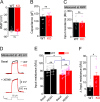
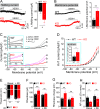

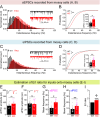

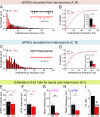

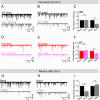
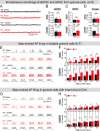
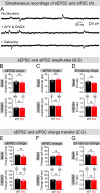


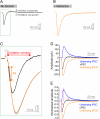


Update of
-
Circuit-based intervention corrects excessive dentate gyrus output in the Fragile X mouse model.bioRxiv [Preprint]. 2023 Nov 13:2023.09.27.559792. doi: 10.1101/2023.09.27.559792. bioRxiv. 2023. Update in: Elife. 2024 Feb 12;12:RP92563. doi: 10.7554/eLife.92563. PMID: 37808793 Free PMC article. Updated. Preprint.
Similar articles
-
Circuit-based intervention corrects excessive dentate gyrus output in the Fragile X mouse model.bioRxiv [Preprint]. 2023 Nov 13:2023.09.27.559792. doi: 10.1101/2023.09.27.559792. bioRxiv. 2023. Update in: Elife. 2024 Feb 12;12:RP92563. doi: 10.7554/eLife.92563. PMID: 37808793 Free PMC article. Updated. Preprint.
-
Voltage-Independent SK-Channel Dysfunction Causes Neuronal Hyperexcitability in the Hippocampus of Fmr1 Knock-Out Mice.J Neurosci. 2019 Jan 2;39(1):28-43. doi: 10.1523/JNEUROSCI.1593-18.2018. Epub 2018 Nov 2. J Neurosci. 2019. PMID: 30389838 Free PMC article.
-
Development of GABAergic Inputs Is Not Altered in Early Maturation of Adult Born Dentate Granule Neurons in Fragile X Mice.eNeuro. 2018 Dec 3;5(6):ENEURO.0137-18.2018. doi: 10.1523/ENEURO.0137-18.2018. eCollection 2018 Nov-Dec. eNeuro. 2018. PMID: 30627633 Free PMC article.
-
Hilar mossy cell circuitry controlling dentate granule cell excitability.Front Neural Circuits. 2013 Feb 12;7:14. doi: 10.3389/fncir.2013.00014. eCollection 2013. Front Neural Circuits. 2013. PMID: 23407806 Free PMC article. Review.
-
BDNF in fragile X syndrome.Neuropharmacology. 2014 Jan;76 Pt C:729-36. doi: 10.1016/j.neuropharm.2013.05.018. Epub 2013 May 29. Neuropharmacology. 2014. PMID: 23727436 Review.
Cited by
-
Hypnotic treatment improves sleep architecture and EEG disruptions and rescues memory deficits in a mouse model of fragile X syndrome.Cell Rep. 2024 Jun 25;43(6):114266. doi: 10.1016/j.celrep.2024.114266. Epub 2024 May 23. Cell Rep. 2024. PMID: 38787724 Free PMC article.
References
MeSH terms
Substances
Grants and funding
LinkOut - more resources
Full Text Sources
Medical
Molecular Biology Databases
Research Materials

